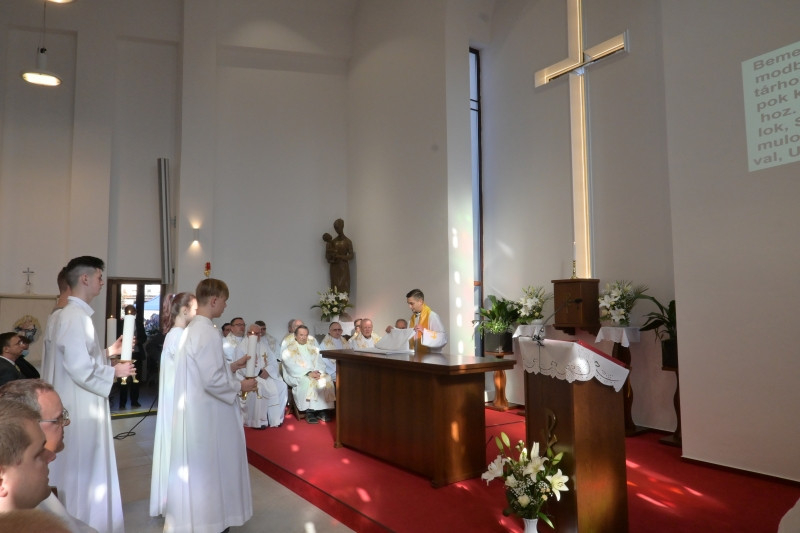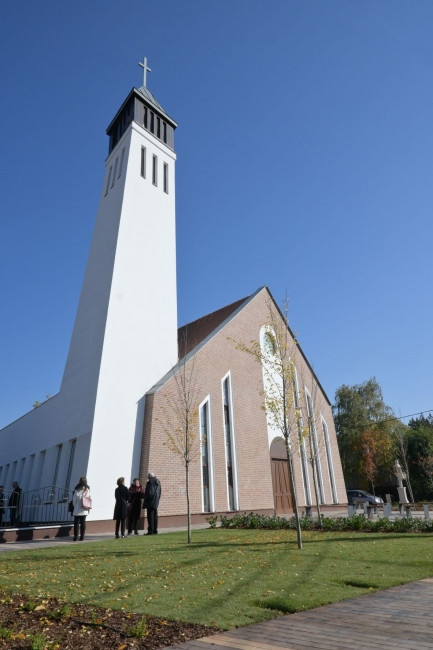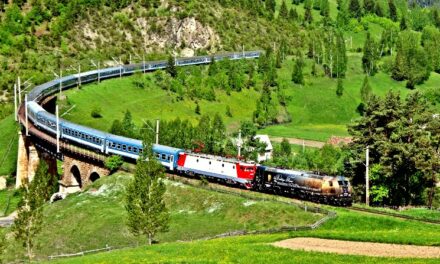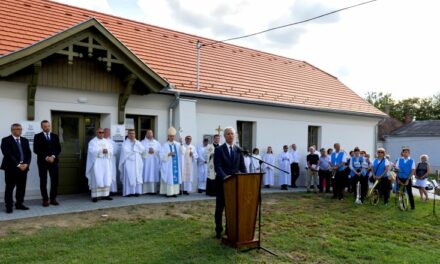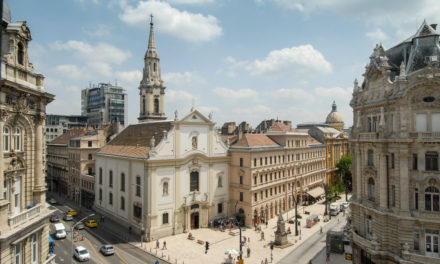In the Rákócziliget district of Dunaharaszti, a new church was built on the initiative and cooperation of the members of the church community, which was blessed on October 30 by County Bishop Marton Zsolt Váci as part of a celebratory mass. The construction of the church named after St. Imre was made possible by the donations of local believers, the work of many volunteers, and the financial support of the diocese, the municipality and the state.
In the 1920s, due to the growing number of residents of Rákóziliget in Dunaharaszti, it became necessary to build an independent church next to the Szent István church in the center of the settlement. The church at that time was completed in 1933. In 1944, the retreating German army blew up both churches in Dunaharaszt. The Szent István church was rebuilt after the war, but the Rákócziliget believers used the emergency chapel in the parish building until today.
Since the end of the Second World War, the parish had wanted to build a new church in place of the blown-up church. Parish priest András Láng and the church council jointly decided in 2012 to build the new church, which was supported by the local believers as well as the believers of the other community of the settlement, the Szent István parish.
"We feel that the age we live in needs a sign in the heart of the city of Dunaharaszti. We want to build a church that will clearly indicate God's presence in our city on the outside, and on the inside will preserve the warm, welcoming and familiar atmosphere that has developed so far. In addition, we consider it important that this work brings the parish together even more," reads the goals of the church construction on the community's website. Almost ten years passed from the idea to the realization, and an invitation to tender was issued for the preparation of the plans.
The seven design concepts were submitted to professional criticism and public voting, the latter of which only the residents of the city could vote, so that the result truly reflected the opinion of the locals. As a result of the concept, technical feasibility and public vote, the new church was built based on the plans of Archimon Építéz Stúdió (Tamás Apró, László András, Klára Hegedűs) based in Dunaharaszt.
"It was a clear goal that the building not only serves the Holy Mass once a week, but also the life of the community. The faithful arrive at the main entrance, but at the end of the mass they have the opportunity to go through the arcaded side exit to the courtyard, where they can meet each other, and there is also a suitable space for children," Tamás Apró explained the concept.
The new church in Dunaharaszti/source/magyarkurir.hu
In 2021, with the support of the municipality, the square in front of the church was also created, part of which functions as a public park, connected to the local bicycle path.
The construction was realized with a total budget of HUF 200 million, to which the local faithful, the diocese, the residents of the sister city in Germany, the municipality, and the state also contributed.
"This church was built because there were believers who demanded it. The former parish building, which was used as a chapel for many years, was already very cramped. It can be clearly said that by the end of the several-year church building process, a community was also built from the faithful. We always found local help for every task, the church was built with the work of many people, added the architect.
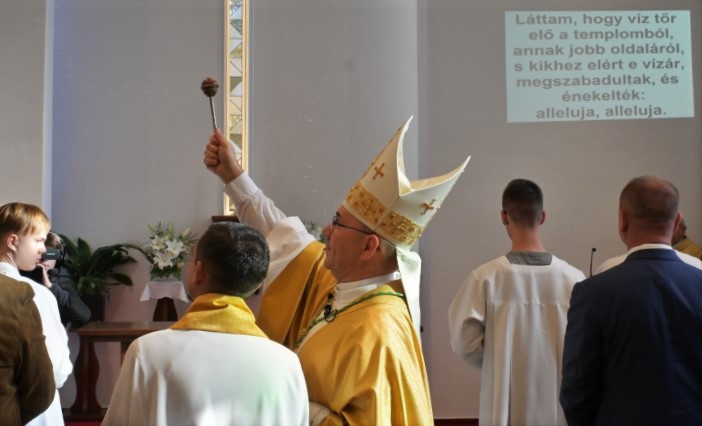
Bishop Zsolt Marton blesses the church/source/, magyarkurir.hu
The church was blessed by Marton Zsolt, bishop of Vác, on October 30. Referring to the Gospel of that day, he reminded the faithful of the words of Jesus: true worshipers of God worship him in spirit and in truth.
We humans need physical space and time to worship. We need a liturgy, because here on earth we are made up of body and soul, and we express our praise through artistically shaped creations of the material world.
Source and photo: magyarkurir.hu / Diocese of Váci

